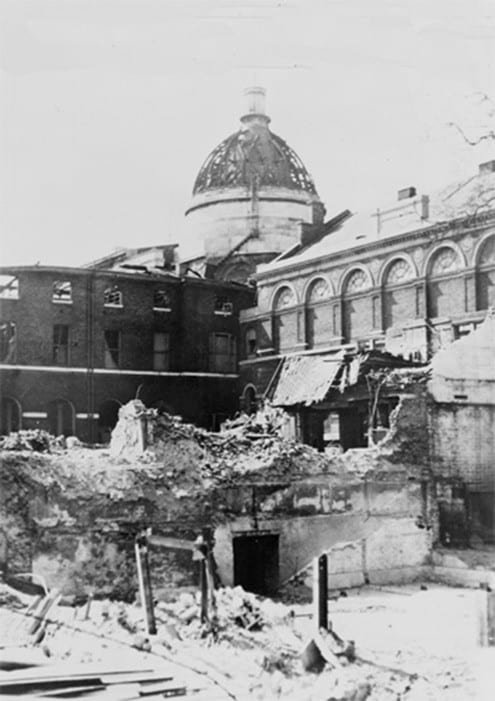The astronomers who didn’t stop for a missile strike (or a flat battery)
By Oli Usher, on 18 September 2015
This remarkable document comes from the observing log of the University of London Observatory. The observatory is now a UCL teaching facility and part of the Department of Physics & Astronomy, but at the time was an important research facility.
It reveals the effect of the Nazi bombing of London during the second world war.
UCL’s Bloomsbury campus was severely damaged in raids early in the war, with the Library’s dome destroyed and the historic buildings around the main quadrangle all gutted by fire.
Relentless bombing from aircraft early in the war, then by V1 and V2 missiles later in the war brought the conflict close to Londoners, and the unperturbed tone of the log makes clear how commonplace it had become – even in the quiet suburban environment of Mill Hill, where the observatory is located.
The log reads:
1944 August 3
Opened 21h. Sky clear.
Found red light on spectrograph not workingm, owing to plug having been left in and battery run down. Set on γ Cas with the help of dark room red light.
I started exposure at 21h 44m GMT.
Flying bomb exploded very close and shifted star in declination out of the field.
Star recovered and exposure restarted at 21h 47m GMT.
Just after starting the second time, a second flying bomb exploded. This was more distant and though it shifted image from the [spectrograph] slit, star did not go out of field and was quickly recovered.
Exposure ended 22h 07m GMT.
Exposure time = 20m.
Plate developed.
Closed 22h ½.
EMP CCLG
The event was a V1 flying bomb strike on nearby Hendon, which killed eight and destroyed 193 houses.
The signatures on the end of the document are of historical note too – alongside CCL Gregory, the director of the observatory, was EM Peachey. She is better known today under her married name of Margaret Burbidge. At the time, she was a young astronomer who had just passed her PhD, but she went on to become one of the preeminent astrophysicists of the twentieth century.
The observatory will be holding a one-day astronomy event in the Quad on 2 October, and an exhibition of astronomical images produced by UCL staff and students using its telescopes will be held along the walls of the North Cloisters throughout the term.
 Close
Close




